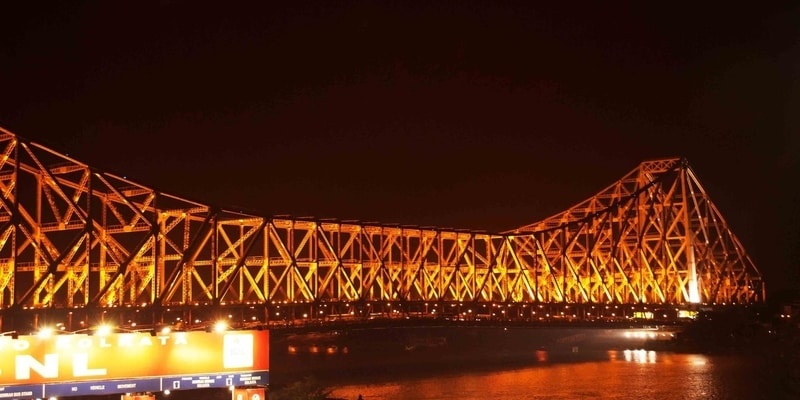
Kolkata's Howrah Bridge Turns 75
Howrah Bridge is a bridge which was constructed over the Hooghly River in West Bengal, India. The bridge was originally named the New Howrah Bridge because it replaced a pontoon bridge at the same location linking the two cities of Howrah and Kolkata. The bridge is one of four on the Hooghly River and is a famous symbol of Kolkata and West Bengal. Recently this iconic bridge celebrated its 75th year of existence. Here are a few lesser known facts about Howrah Bridge. 1. Before the Howrah Bridge was born there was a proposal to build a suspended-girder bridge at the site to cross the Hooghly River. There were also proposals to build a tunnel or an arched bridge. As fate would have it, these plans for construction never came to fruition and Howrah was built. 2.This is the only bridge that does not have nuts and bolts and was built by riveting the whole structure. 3. On June 14th, 1965, the bridge was renamed Rabindra Setu after the great Bengali poet Rabindranath Tagore. However, it is still popularly known as Howrah Bridge. 4.It carries a daily traffic of approximately 100,000 vehicles and possibly more than 150,000 pedestrians, making it one of the busiest cantilever bridges in the world. 5. The Howrah Bridge stretches across 705 meters and has a width of 71 feet, not including the 14 feet footpaths on both sides. At the time of its construction, this made it the 3rd longest bridge of its kind. Today, it is regarded as the 6th longest cantilever bridge in the world. 6. The first transport to make the journey across the Hooghly, via the newly opened bridge was not a car or a bullock cart; it was a tram. Because of the heavy load on the bridge, the use of trams was discontinued along with the route from 1993.
